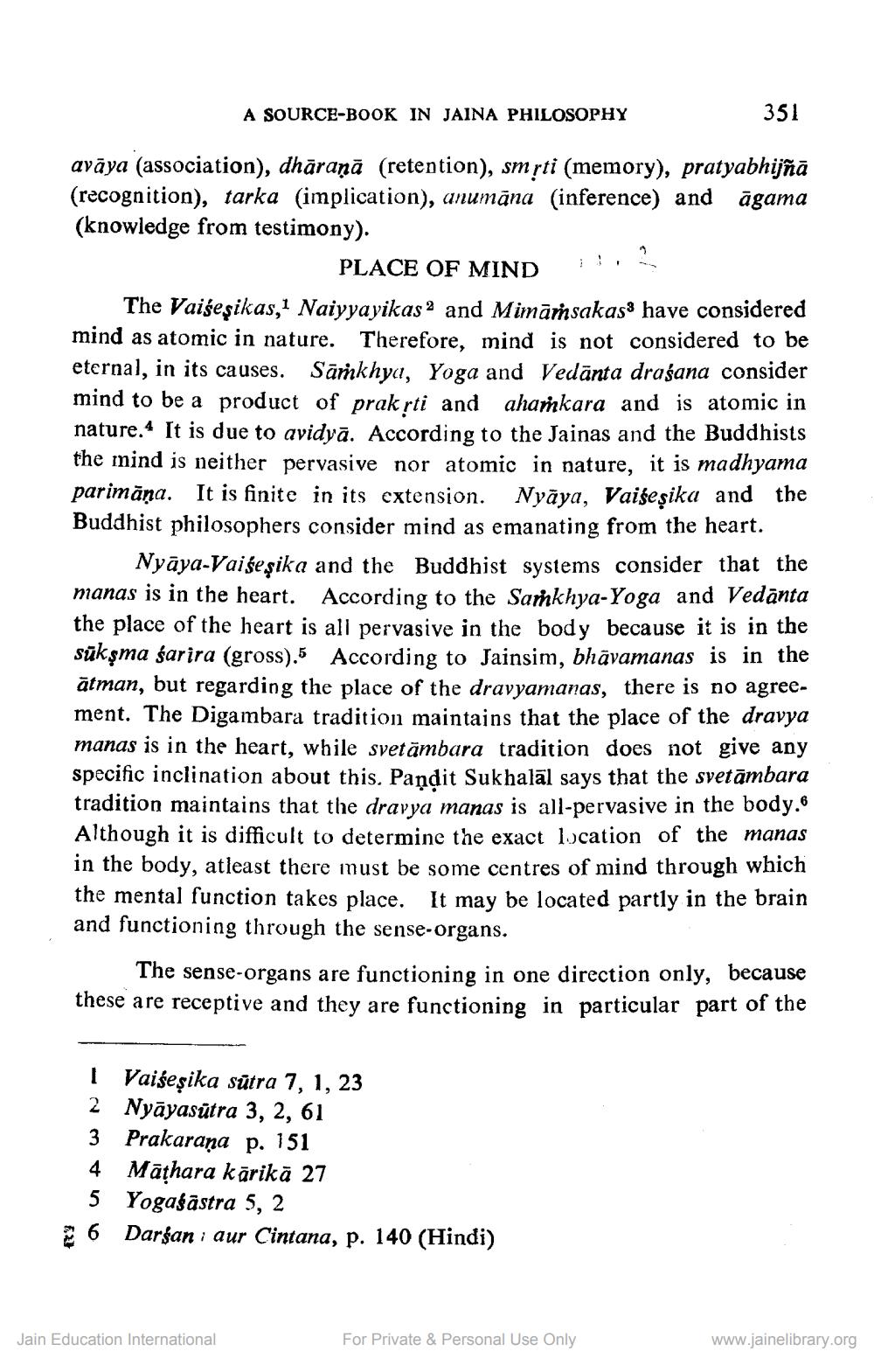________________
A SOURCE-BOOK IN JAINA PHILOSOPHY
351
;:.?
E OF MIND
avāya (association), dhāraņā (retention), smrti (memory), pratyabhijñā (recognition), tarka (implication), anumāna (inference) and agama (knowledge from testimony).
PLACE OF MIND The Vaiseșikas,1 Naiyyayikas 2 and Mimāṁsakaså have considered mind as atomic in nature. Therefore, mind is not considered to be eternal, in its causes. Sārnkhya, Yoga and Vedānta drašana consider mind to be a product of prakrti and ahamkara and is atomic in nature. It is due to avidyā. According to the Jainas and the Buddhists the mind is neither pervasive nor atomic in nature, it is madhyama parimāņa. It is finite in its cxtension. Nyāya, Vaiseșika and the Buddhist philosophers consider mind as emanating from the heart.
Nyāya-Vaiseșika and the Buddhist systems consider that the manas is in the heart. According to the Samkhya-Yoga and Vedānta the place of the heart is all pervasive in the body because it is in the sükşma sarira (gross). According to Jainsim, bhāvamanas is in the ātman, but regarding the place of the dravyamanas, there is no agreement. The Digambara tradition maintains that the place of the dravya manas is in the heart, while svetāmbara tradition does not give any specific inclination about this. Pandit Sukhalāl says that the svetāmbara tradition maintains that the dravya manas is all-pervasive in the body. Although it is difficult to determine the exact location of the manas in the body, atleast there must be some centres of mind through which the mental function takes place. It may be located partly in the brain and functioning through the sense-organs.
The sense-organs are functioning in one direction only, because these are receptive and they are functioning in particular part of the
| Vaisesika sütra 7, 1, 23 2 Nyāyasūtra 3, 2, 61 3 Prakarana p. 151 4 Māthara kārikā 27
5 Yogaśāstra 5, 2 26 Darsan i aur Cintana, p. 140 (Hindi)
Jain Education International
For Private & Personal Use Only
www.jainelibrary.org




